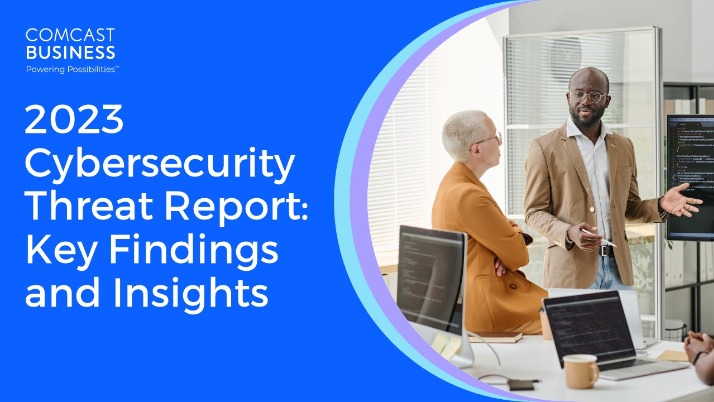
Cybersecurity Insights
Explore how businesses of all sizes can stay ahead of a constantly evolving threat landscape with this collection of industry research, expert analysis, and best practices.

Strengthening Cybersecurity: Important Practices for State and Local Agencies
Discover how state and local agencies are strengthening cybersecurity defenses.
Read More
IDC FutureScape: Worldwide Enterprise Connectivity 2025 Predictions
IDC predictions to inform business decisions that drive positive outcomes for the future
Read More
Startup 101: Four Building Blocks for a Strong Foundation for your Business
See the key steps to building a strong base for your small business.
Read More
Financial Services Technology Trends for 2025 and Beyond
Explore the technology trends shaping modern financial services.
Read More
5 Essential Steps to Scaling Your Business
Learn the key actions you can take to scale your small business.
Read More
Improving Security Operations Through SASE and XDR
See what's driving security teams to pursue modernization initiatives.
Read More
SecOps Teams Are Under Pressure: How SASE and MDR Can Help
See how SecOps teams can enhance security operations using SASE and MDR.
Read More.png?sfvrsn=50ad6e04_1)
Report: Improving Security Operations Through SASE and XDR
Discover how enterprises are leveraging SASE and XDR frameworks to improve security operations.
Read More
How Automation Can Help Businesses Combat Sophisticated Threats
Learn how automation can be the key to defending against cybersecurity threats.
Read More
Six Cybersecurity Measures that Can Help Protect Your Small Business
Read about the key steps you can take to secure your small business.
Read More
Managed Detection and Response vs. Managed Security Services: The Difference and How to Choose
Managed security services are evolving. Understand the landscape.
Read More.jpg?sfvrsn=fe780b3_1)
An Entrepreneur's Guide to Cybersecurity
Read how Entrepreneur's can better protect their businesses.
Read More
Why Lateral Movement is a Significant Security Challenge, and How MDR Can Help
Learn how managed security services can help solve the challenge of lateral movement.
Read More
Nemertes Report: The Journey to MDR and Managed SOC
Read how challenges implementing cybersecurity solutions can be solved with managed services.
Read More
4 Essential Steps to Identify Cyber Risks and Help Protect Your Business
How small - and medium - size businesses can protect systems and data.
Read More
4 Top Cyber Threats Entrepreneurs Need to Know About in 2024
Top digital threats to know about and how to keep your business protected.
Read More
SASE Trends Report: Beating Expectations on Security While Easing IT Ops
Network security and remote connectivity are now the top challenges driving the adoption of SASE.
Read More
2023 Comcast Business Small Business Cybersecurity Report
This annual report offers a window into what threats small businesses may face this year.
Read More
Major US Online Gaming Company Mitigates Sophisticated DDoS Attack with Comcast Business
Advanced tech and cybersecurity saved a US gaming firm from major downtime and financial loss.
Read More
Solution Architect Perspectives: Cybersecurity in a Perimeter-less Network Environment
The hybrid work model offers a lot of benefits for companies. It also presents many IT challenges.
Read More
7 Key Cybersecurity Tips for Small Businesses
Nearly 60% of small businesses have experienced a data breach, and the stakes are high. Small businesses need to develop strong, well-executed security strategies to stay ahead of the risks. Check out these 7 tips to get started.
Read More
Building a Cybersecurity Strategy to Protect Your Small Business
Build a small business security strategy from the ground up
Read More
Today’s Cyber Threat Landscape, By the Numbers
A snapshot of key findings from the 2023 Comcast Business Cybersecurity Threat Report
Read More
2023 Cybersecurity Threat Report: Key Findings and Insights
Explore key findings from the 2023 Comcast Business Cybersecurity Report.
Read MoreLearn how Comcast Business can help
keep you ready for what's next.


